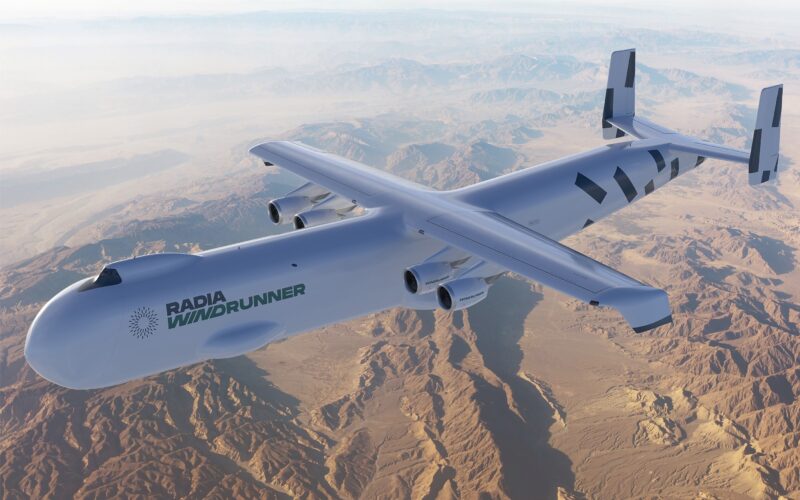In an age where the transition to renewable energy sources is becoming increasingly urgent, one company specializing in this field is taking matters to a whole new level. Radia plans to transport the world’s largest onshore wind turbines to remote, hard-to-reach locations using the largest aircraft ever conceived by humankind.
Their unique aircraft project, called WindRunner, will become the largest and heaviest flying machine ever built when fully certified. Boasting colossal dimensions and designed to carry the world’s largest payloads, WindRunner is set to break existing aviation records for scale by some margin and will set a new benchmark in airborne cargo transportation.
About Radia
Radia is based in Boulder, Colorado, and was set up in 2016 by CEO Mark Lundstrom, an entrepreneur and Massachusettes Institute of Technology-taught aerospace engineer whose niche is co-founding companies that bring aerospace techniques, technologies, and innovations to new sectors, including biotech, telecommunications, and materials science.
Led by a team of experts in aerospace engineering and other key disciplines, Radia’s primary objective is to assist the world in meeting critical decarbonization targets, and the company considers onshore wind energy as a significant and increasingly large part of the energy mix. Wind-driven sustainable energy is forecast to contribute between 20 to 41% of total energy production by 2050 according to Bloomberg NEF and the International Energy Agency (IEA).
However, given that the most efficient wind turbines (those that produce the most power and drive down costs) are the largest, there lies the problem. The largest turbines, and their blades in particular, are so huge that they are difficult to transport, deliver, and deploy to the often remote locations in which they are to be located. While doubling the length of a turbine blade roughly quadruples its power output, their sheer size largely restricts them to offshore use – for the time being at least.
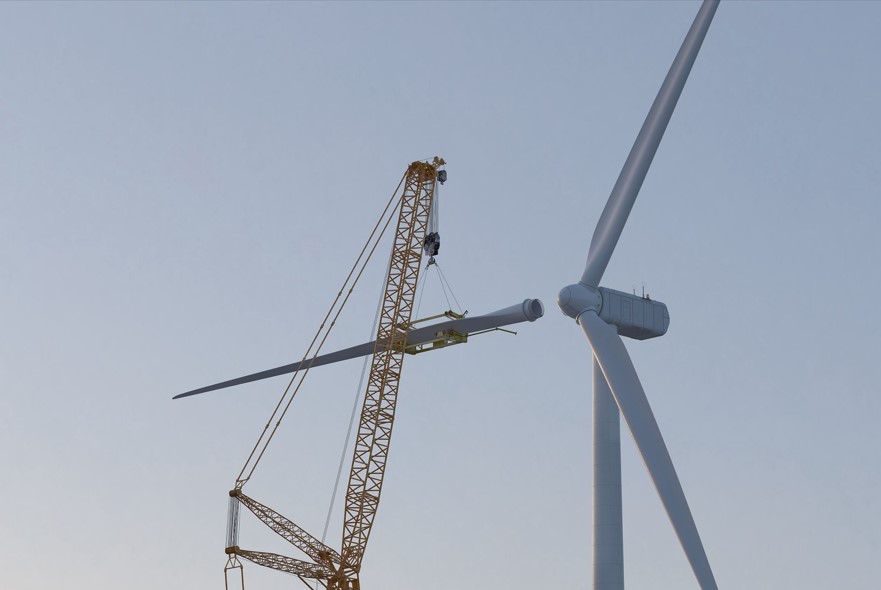
This is where Radia comes in. The firm has designed and plans to build a unique aerial transportation solution specifically engineered to deliver the largest wind turbine blades and components directly to wind farm sites. This will include transporting them to difficult-to-access locations and even low-wind locations where large blades are needed to generate power more cost-effectively. This solution is the WindRunner aircraft, which will have the ability to transport even the largest turbines and blades to the deployment sites.
Simultaneously, Radia is developing a world-class portfolio of wind energy projects to leverage this solution and is partnering with the world’s largest energy and industrial companies to support their energy transition plans.
According to Radia, the result will be “a radical expansion of the scope and scale of the onshore wind energy industry, an expanded role for onshore wind in the renewable energy mix, more clean electrons and green molecules at low cost, and significant progress on the path to decarbonization.”
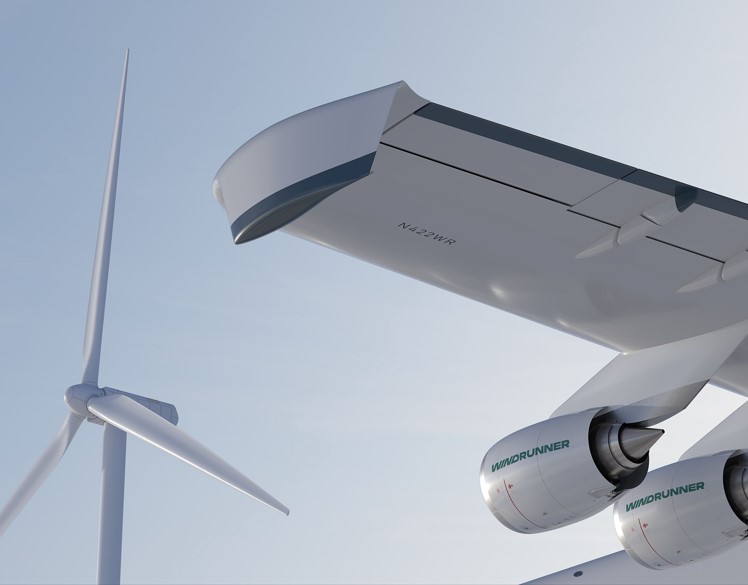
While Radia does not manufacture wind turbines itself, it will partner with wind turbine manufacturers to deliver their products of today and tomorrow to the deployment sites. Radia refers to this collaboration project as ‘GigaWind’, which will partner with farm developers to build new sites where the largest turbines will be more efficient and effective.
Radia has so far received nearly $100 million in funding from external investors including LS Power, Good Growth Capital, Capital Factory, Caruso Ventures, and ConocoPhillips.
Introducing WindRunner
Radia’s WindRunner has been designed as a large outsize cargo transport aircraft with dimensions specifically tailored to transport wind turbine blades. The aircraft is due to enter service with Radia by the end of the decade and will be operated by just two pilots plus a supporting ground crew.
The aircraft configuration sees a monocoque fuselage with a raised flight deck above the nose-to-tail cargo compartment below. The four engines are mounted on pylons under a high wing placed over the central section of the fuselage, with eye-catching ‘drooped’ wingtips. The tail is attached to the rear of the empennage and is of a twin-tail design, with a vertical stabilizer attached at each end of the single horizontal stabilizer.
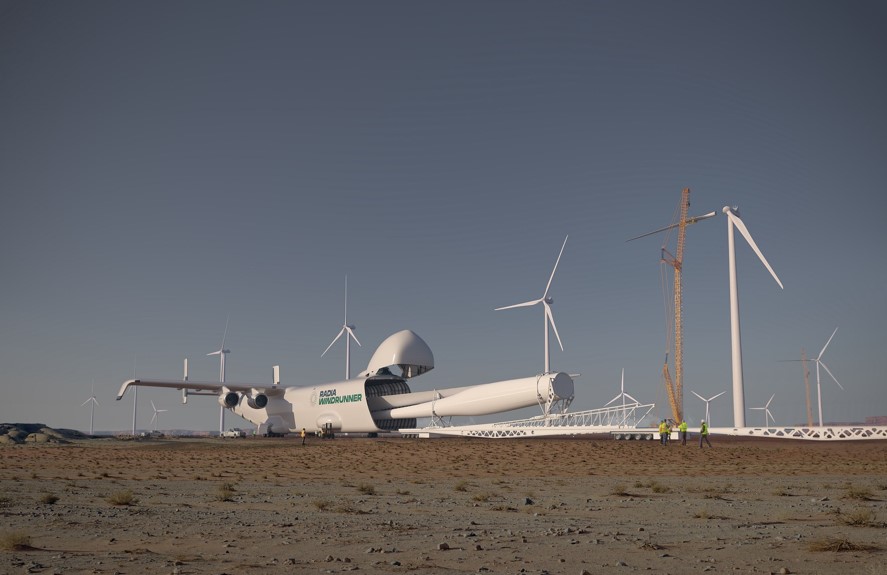
Turbine blades will be loaded and unloaded through WindRunner’s nose cargo door which hinges upwards forward of her flight deck section, similar to the Boeing 747 freighter. This crucial design aspect reduces loading/unloading times and “ensures proper placement of cargo”, according to Radia.
WindRunner has been designed to operate from regional hubs located close to turbine blade manufacturers, with the range ability to deliver the turbine components to the sites where they are needed, including remote and hard-to-access sites where the aircraft can operate from unprepared and semi-prepared temporary and permanent landing strips. According to Radia, by doing so, WindRunner will open up three times the amount of global land area currently available for large wind turbine installations.
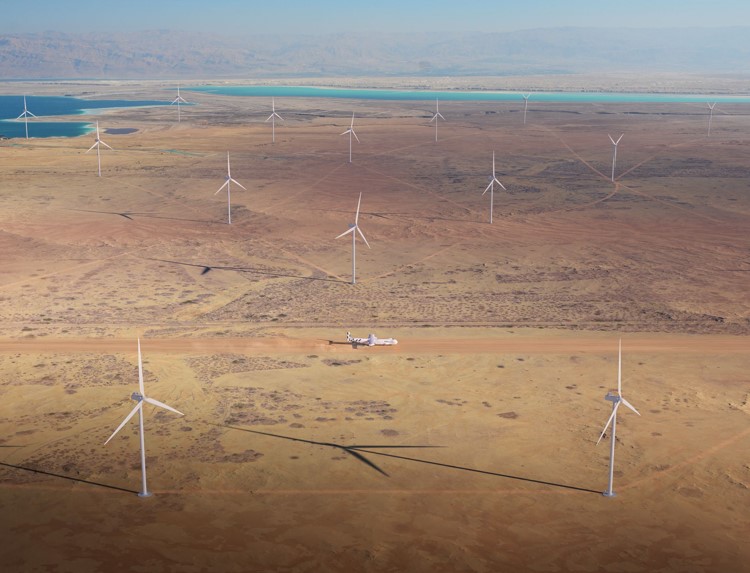
Despite its size, the aircraft will use runways of just around 6,000ft (1,800m), far shorter than any other commercial outsize cargo aircraft in service. The aircraft will be able to fly mission lengths of up to 1,200 miles (2,000km) and will cruise at a maximum altitude of 41,000ft (12,500m) at a cruise speed of around Mach 0.6.
WindRunner dimensions
With its colossal fuselage length of 356ft (108m) and a payload volume of 272,000 cubic feet (8,200 cubic meters), once certified, the WindRunner will become the largest aircraft ever built, surpassing anything that has gone before.
The aircraft’s height will measure 79ft (24m) while its wingspan will be 261ft (80m). In terms of payload, the aircraft can carry cargoes up to 344ft (105m) in length, 24ft (7.3m) in height, and 24ft (7.3m) in width. The maximum payload weight will be 160,000 lbs (72.575kg).
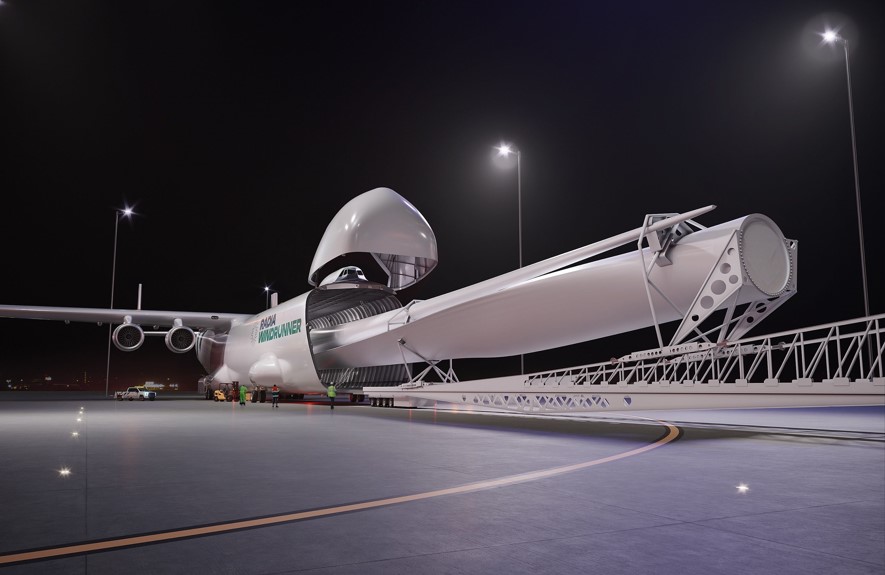
The size of current turbine blades often restricts the sites to which they can be transported, as they are generally transported by a multi-modal combination of road and rail solutions. However, WindRunner has been designed to overcome this issue, by using air transportation as the medium to carry the turbine blades to deployment sites.
With the largest modern-day turbine blades measuring around 230 ft (70 m), these blades can be easily accommodated in WindRunner’s cavernous hold.
Comparisons
Given its colossal dimensions and cargo-lifting capabilities, Radia’s WindRunner will cast a shadow over the world’s largest current commercial freighter aircraft, including the Boeing 747-400F, the Ukrainian-built Antonov An-124 four-engined airlifter, and the Airbus Beluga XL freighter.
Incredibly, its capacity also far exceeds that of the Antonov-An 225 ‘Mriya’ outsize cargo plane – the single flyable example of which was destroyed in the early days of the Russian invasion of Ukraine in February 2022.
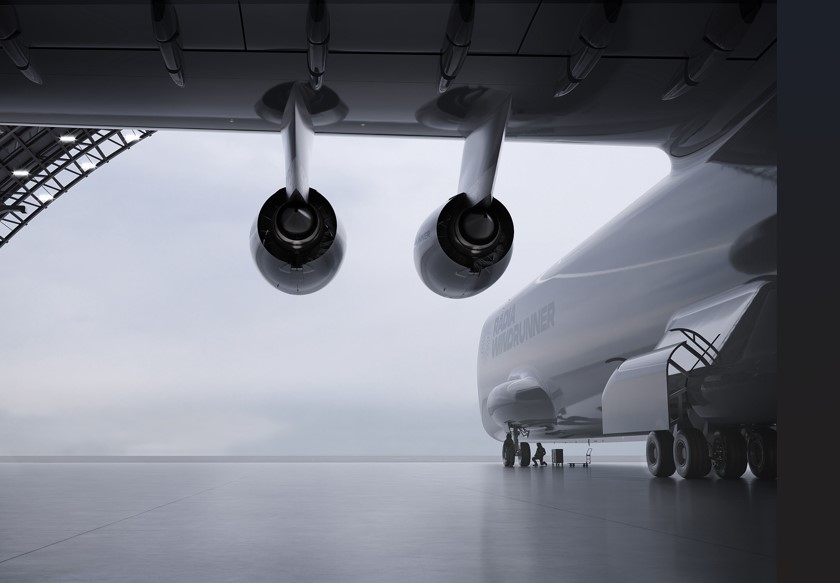
The WindRunner’s capacity of 272,000 cu ft (8,200 cu m) will dwarf that of the Boeing 747-400F at just 21,600 cu m (610 cu m), the Antonov An-124 at 41,000 cu ft (1,160 cu m) and the Airbus Beluga XL at 78,000 cu ft (2,209 cu m). In fact, with such an unsurpassed cargo capacity, the WindRunner’s capacity will exceed that of the Boeing 747F by around twelve times – a simply eye-watering statistic.
Further insight
Radia’s production of WindRunner will rely on already-extant technology in the aerospace industry to expedite the aircraft’s construction and certification process. From the use of efficient aerospace-grade materials and components to manufacturing processes and techniques, Radia is hoping that by doing so, the plane will meet its entry-into-service date at the end of the decade.
According to Rachel Kelley, Radia’s Vice President of Aircraft Development and Chief Engineer who spoke exclusively to AeroTime at the Farnborough Airshow 2024, by using existing technologies such as engines and other key components, WindRunner’s certification is far more likely to proceed to the planned timetable.
Indeed, Kelley, who previously was employed by Boeing as its Director of Engineering for the VC-25B (Air Force One), advised that as another member of the WindRunner team is a former Federal Aviation Administration (FAA) regulator who was on the team working to certify the airplane, Radia is already collaborating with the FAA on a multi-level basis to ensure that the regulator is aware of every major development in the WindRunner development process.
Kelley said that she sees the potential for “dozens of WindRunner aircraft” given the size of the onshore wind energy market potentially being worth $10 trillion over the coming years.
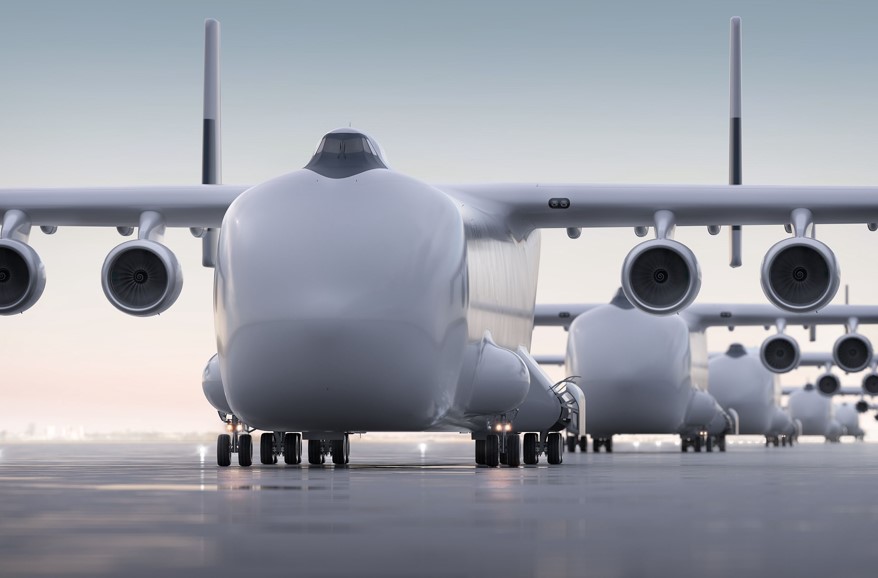
WindRunner will be manufactured using conventional techniques, with the final assembly line location yet to be disclosed by the company. Just recently, Radia announced that it has partnered with key industry collaborators such as Aernnova, Leonardo, and AFuzion to bring the WindRunner to life. Aernnova will partner with Radia on the development of the aircraft’s wing and engine pylons, While Leonardo will develop the fuselage, and AFuzion will provide safety and certification consulting.
“WindRunner is an opportunity for the aerospace industry to have a decisive impact on climate change, diversify into the energy industry, and seize an enormous market opportunity,” said Mark Lundstrom, Radia’s CEO. “We are extremely pleased and excited that Aernnova, Leonardo, and AFuzion, three companies at the forefront of aerospace design, development, and engineering, have chosen to partner with us on this critically important project.”
“WindRunner is exciting and consequential,” said Lundstrom, “not only because of the scope of the project but also because of its critical importance to the viability and the economics of renewable energy and society’s ability to meet our growing need for power while achieving our climate goals. Our partnership with Aernnova, Leonardo, and AFuzion will enable us to deliver on that promise, fulfill our mission, and achieve a significant impact on renewables,” he added.
Summary
With the market for onshore wind energy estimated to be worth up to $10 trillion by 2050 by adding as many as one million new wind turbines, there can be little doubt as to the potential for the industry to grow exponentially in the coming years.
However, with the largest turbines limited to offshore sites for the time being, Radia is seeking to unlock that potential by bringing offshore wind energy generation onshore, reducing costs, and increasing overall efficiencies.
With a fleet of WindRunner planes certified and operating globally, transporting turbines and blades closer to their locations, eradicating the need for lengthy and complicated surface transport solutions, and opening up new sites that are currently unavailable due to accessibility issues, the future growth of onshore wind energy seems assured.
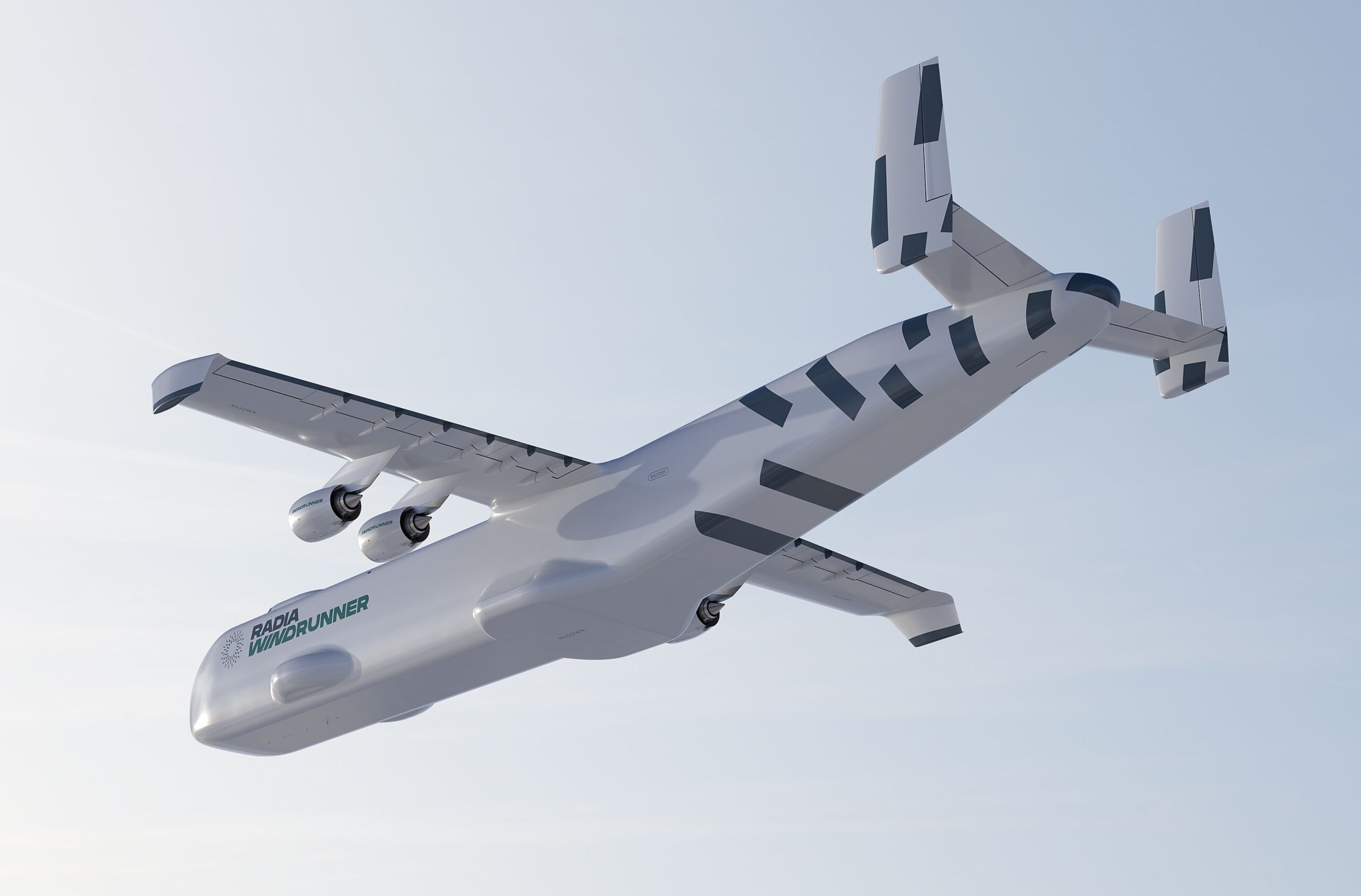
When WindRunner takes to the air by the end of the decade, not only will it open up the wind energy market enormously, but from an aerospace perspective, it will become a landmark moment. Never before will such a huge manmade structure have taken to the air and successfully flown, setting new records and reserving a place for itself in aviation history books.
Aerospace design and technology have come a long way in the 121 years since the Wright Brothers first took to the air in 1903. However, with WindRunner, aviation is truly on the cusp of its next momentous era and its entry into service will raise even more questions about just how much larger aircraft can get. But with Radia’s heavy-lift brainchild due to set the new standard, the answer would appear to be limitless.

